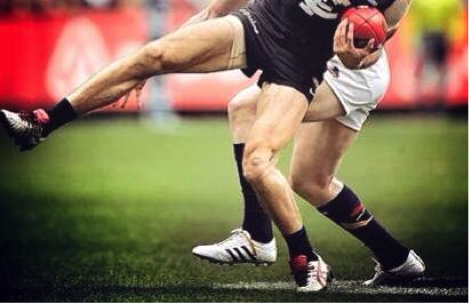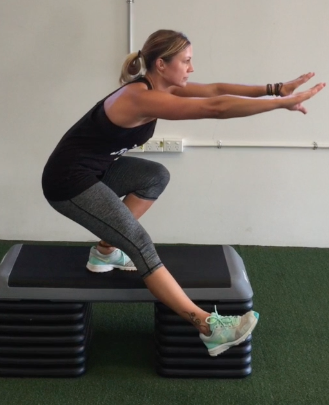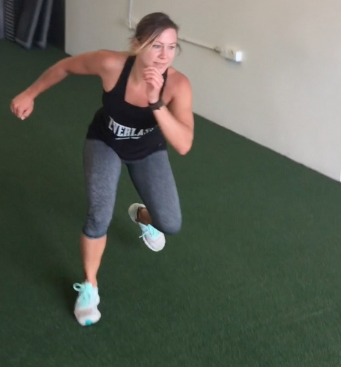ACL Injury in Females – Part 2
So what to do about it?
A key approach to this ACL problem that is seemingly universal amongst the coaches and conditioning specialists is to perform certain strength and specific neurological exercises as often as possible in the conditioning program. Most advocate for certain things to be done daily, however a more realistic expectation is for at the very least, these things to be done in each strength training session, and then hopefully on top of that, club coaches out there are savvy enough to include similar things in their active warm up prior to club training.
‘Women are certainly more susceptible to certain injuries, specifically ACL tears; this demands that prevention programs be incorporated in daily training.’
‘There is no need to make things complex. The interplay between all the training variables will take care of the training complexity. A few simple drills or exercises properly combined can have a significant training effect.
Vern Gambetta
‘Since most ACL injuries in female athletes occur from noncontact mechanisms, regular participation in a conditioning program that is designed to enhance the strength of the supporting structures and increase neuromuscular control of the knee joint may reduce the risk of sport related injuries.’
Avery D Faigenbaum EdD
Age and Sex Related differences and their implications for resistance exercise
NSCA Essentials of Strength Training & conditioning – 3rd Edition


So strength training, and specifically targeted strength training is a key for female footy players to reduce the incidence of this very common injury.
Mike Boyle gives a very short overview and simplification of the approach that he takes with his athletes in regards to conditioning to avoid ACL issues;
‘A sound ACL injury prevention program needs to focus on two things:
- Single-leg strength
- Landing and deceleration skills’ (plyo)
‘Single-leg strength exercises, a proper plyometric program, and a conditioning program that emphasises changes of direction go a long way to the prevention of ACL injuries.’
‘The key to understanding functional anatomy is to realise everything changes when you stand on one leg.’
So 2 keys to the strategy are highlighted by Mike here; single leg based training, as well as landing and deceleration based plyometric work. The single-leg based training prescription by Mike here highlights an example of the functionality discussion that we have had previously in articles, and indeed in Female Specific Strength & Power Training for Aussie Rules, about single leg training in comparison to double leg based training, in that not only are the majority of movements in footy conducted by pushing off 1 leg rather than 2, but also when training single leg exercises, you are also training the key stabilisers of the hip which are forced to do a lot more work, rather than the relative minimal amount of work they are required to do in a double leg setting. This hip stability is a key to develop, as stable hips will mean a lot less pressure gets passed on further down the chain (to the knees and ankles), and there will also be more control as a bonus.


Single leg exercises are highly functional not only because of their contribution to movement and performance, but also because of their importance to injury prevention.
The prescription of plyometric-based training – or more specifically landing based plyometric work – is a practical example of training neural control. You will remember from earlier some of the quotes taken from various experts that quoted the ‘neural deficit’ or lack of neural control of limbs particularly in the lower body arising in females after puberty, and this is a method where we can now look to specifically look to work on developing this common weakness.
Just in case you weren’t clear on just how highly this world renowned American college strength and conditioning expert rates single leg training and its importance;
‘I truly believe single-leg training is the best way to prevent knee injuries and the best way to train around bad backs.’
‘Single leg strength and stability is the essence of lower body strength, and is the most important quality in performance training.’
‘The importance of this training cannot be overstated.’
Mike Boyle
Mike also makes reference to another key topic of functionality that we discussed in section 1 of this book;
‘The lack of improvement in issues with knee problems lies in the modern sagittal-plane dominant, double-leg-oriented strength training so prevalent in the American training system.’
‘Its clear the key to solving anterior knee pain lies in control of hip, knee and foot movement in the frontal plane, and single leg exercises must be employed in both strength training and power training to address these issues.’
Mike is certainly not alone here, Paul Chek is just one of many who agrees and highlights that;
‘Most orthopedic injuries happen by destabilisation in the frontal and transverse planes, yet we spend 98% of the time training the sagittal plane!’
So from this short discussion and looking at the opinions of various experts, we can take home that when looking to train to minimise ACL injury, it is important that we;
- Train single leg exercises
- Train landing and deceleration plyometrics
- Perform frontal and transverse exercises as much as possible to go with the overwhelming number of sagittal movements that exist in most strength training programs.


Landing and deceleration based exercises, as well as training lunging and movement in the frontal and transverse planes of movement, rather than just the sagittal plane both also contribute to the reduction in associated injury - particularly ACL injury.
So that is the approach in a nutshell.
Additionally, in regards to the other issues that we discuss in the theory section of Female Specific Strength & Power Training for Aussie Rules that contribute to this ACL risk, a further key training goal to work on with your strength training which will improve all these issues is training hip stability, or lumbo-pelvic stability. This is because, as we have touched on in other articles, and of course the womens - specific training book, often times when issues show up at the knee, they appear secondary to a lack of stability in the core and hips, and this lack of stability then effects structures further down the chain (like the knees and ankles.) So any targeted pelvic stability training, and core stability training – provided done correctly, will have a positive effect on reducing the likelihood of ACL injury.
If you would like more detailed and personalised direction, checkout our personalised online programming, or if you would prefer even more personalised and detailed in-person coaching (for those lucky enough to live in the beautiful city of Adelaide), check out our Athletic Development Coaching and Junior Athletic Development Coaching.
Related;
Injury Prevention - Strength Trainings Role - Part 1
Injury Prevention - Strength Trainings Role - Part 2
Injury Prevention - Strength Trainings Role - Part 3
Strength Coach

